Science
Frogs and Toads Together: Why do Amphibians Group Up?April 11, 2025

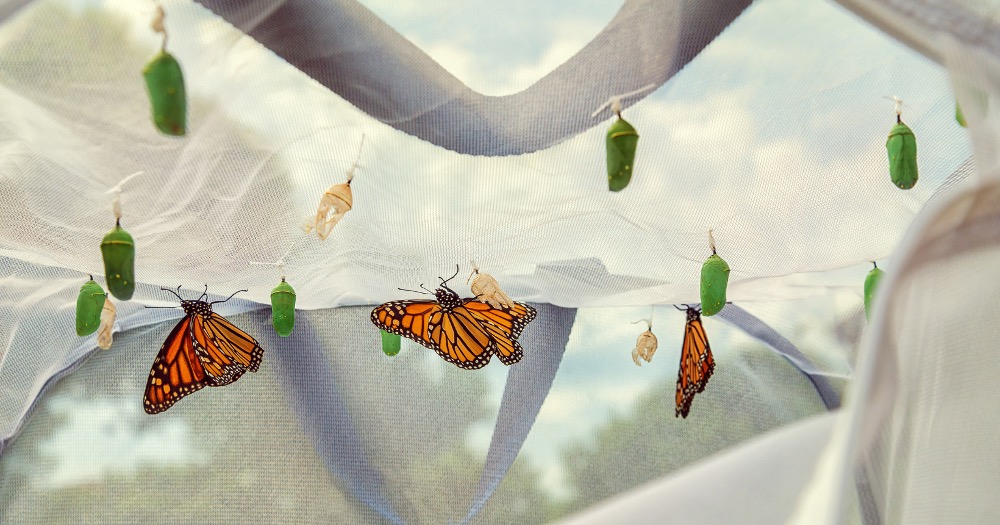
If you’ve thought about adding a raising butterflies kit to your list of activities this year, you’ll want to read this article first! While these kits have great reviews and many teachers praise their benefits in the classroom, there’s a bigger picture to consider.
I had the opportunity to interview Jenn Kirts and Michelle Fournier from the Chippewa Nature Center (CNC) about this topic. The CNC works closely with local schools, offering consultation, professional development, and on-the-ground teaching alongside elementary teachers.
Given their extensive experience, I trusted them to address some tough questions about the conservation consequences of using a raising butterflies kit. Read on to discover the best way to handle butterflies from these kits and explore alternatives that offer similar benefits.
Affiliate disclosure: As an Amazon Associate, I may earn commissions from qualifying purchases from Amazon.com. This is at no extra cost to you. If you’d like to learn more, check out my disclaimers page.
Don’t need all the information? Use this list to get to what you need:
How butterflies are born and develop
What to do with butterflies from my kit
Alternatives to a butterfly kit
Let’s explore why teachers love using butterfly kits in their classrooms. Students who have experienced a hatching butterflies kit benefit in several ways:
Now let’s get a little natural history about the life cycle of butterflies. Butterflies are insects that experience full metamorphosis, or four unique stages of life. Most butterflies hatch from an egg into a caterpillar (the larval stage), then they form a chrysalis (the pupa stage), and then they emerge as a butterfly (the adult stage).
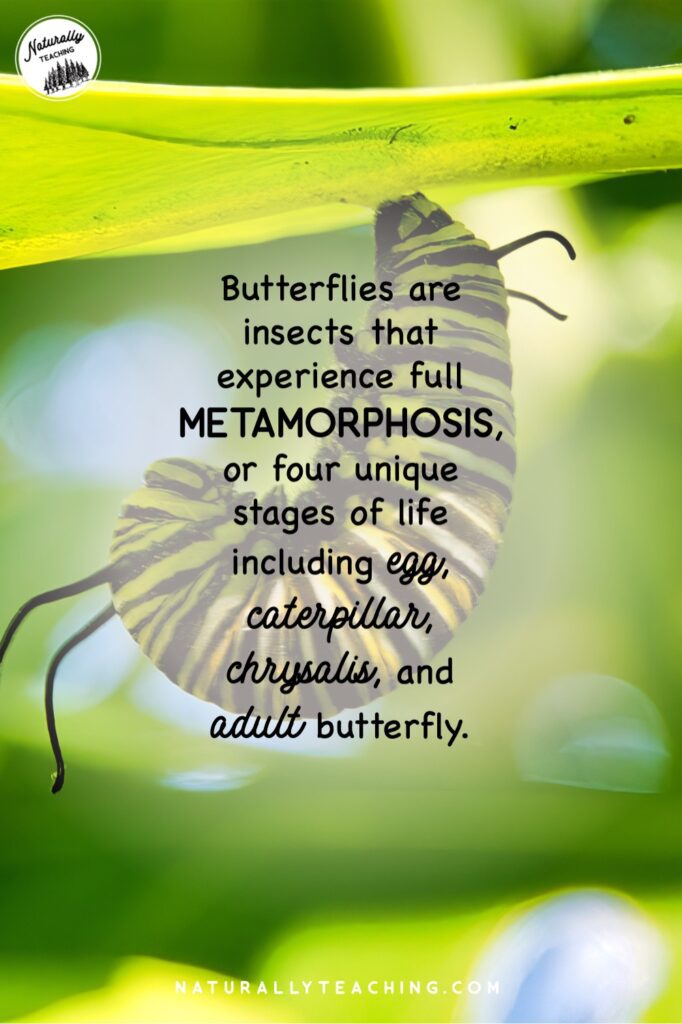
In the caterpillar stage they molt, or shed, their exoskeleton multiple times. Each round of shedding is called an instar. As the caterpillar eats food and gets bigger, they outgrow their exoskeleton and have to shed it. Sometimes the caterpillar looks a little different after it has molted but it’s still considered the larval stage until it turns into a chrysalis.
After spending weeks caring for the caterpillars in your raising butterflies kit, they have moved through their pupa stage and are finally adult butterflies! So… what do you do with them now?
The natural thought is to celebrate your hard work with a butterfly release, afterall, butterflies belong in nature, right? Unfortunately, there could be negative consequences if butterflies raised from kits are released to your local ecosystems.
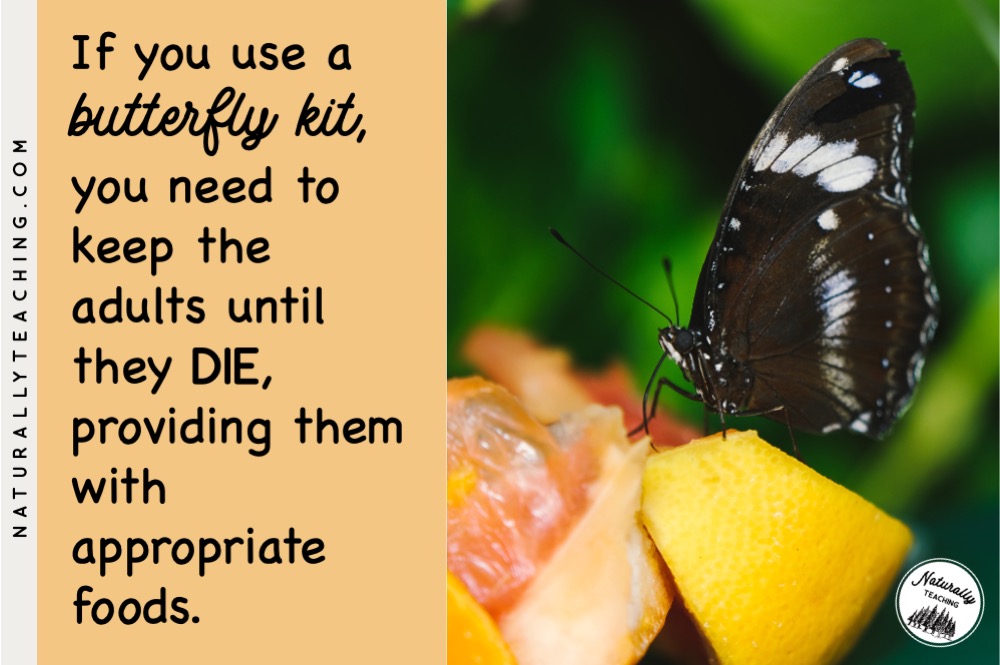
Jenn and Michelle agree that “[b]utterflies raised from a commercial kit cannot be released into the wild. Sometimes they are species that don’t occur locally, but even when they are a local species, they represent a different genetic make-up which could impact local populations negatively. There is also a risk that they could have bacteria, viruses, or fungi that could be introduced to the environment and cause problems.”
Jenn and Michelle also share this advice, “[s]ince you can’t release them, what can you do? You can keep them in your classroom providing appropriate food (sugar water, flowers for natural nectar, or rotting fruit depending on the species) and an enclosed space for them. You can keep them until they reach the natural end of their lifespan. If you cannot do this, you are responsible for humanely euthanizing them.”
To help keep your local wildlife safe, keep this information in mind. If you choose to use a raising butterflies kit in your classroom, you are responsible to care for the butterflies until they die or you are in charge of humanely euthanizing them. If you can’t commit to one of these options, please do not use a butterfly kit in your classroom.
So how can you give your students the benefits of a raising butterflies kit without actually raising butterflies in the classroom? Jenn, Michelle, and I have some alternatives for you.
“Planting a pollinator garden and visiting it regularly to view the different stages of development or finding and visiting a local body of water to observe frog or toad development is a powerful experience for students and demonstrates respect for the natural world.” Jenn and Michelle have a combined 30+ years of outdoor education experience and they have seen first-hand the power of pollinator gardens on children’s understanding of life science. Take their word for it; these plots are worth your time and effort!
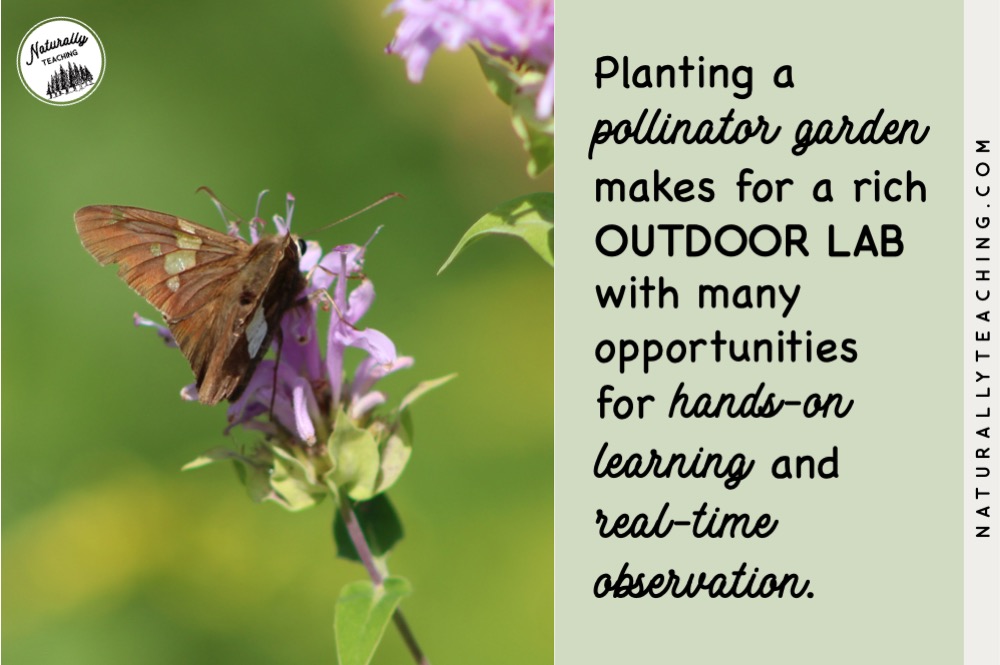
Not only would planting a pollinator garden allow your students to see different stages of development in butterflies, but it would provide habitat for a variety of invertebrates, making for a fantastic outdoor lab and many opportunities for hands-on learning and real-time observation. Plus, there are tons of grants for school pollinator gardens!
Maintaining a pollinator garden can also be a fantastic research opportunity for your students and a way to cultivate responsibility. There are many butterflies that have “host plants”, or a specific group of plants, that they use for different stages of their lives. To help you attract your desired species of butterflies, have your students help you research which plants to get and if they will be successful in your region. If you’re looking for a fantastic picture book to introduce the idea of a native plant garden, check out The Garden Next Door by Collin Pine.
If you’re into the idea of planting a garden to attract Monarchs, consider cultivating a Monarch Waystation. “Monarch Waystations are places that provide resources necessary for monarchs to produce successive generations and sustain their migration” (Monarch Watch, n.d.).
According to Monarch Watch, there is no minimum plot size to be able to register a space as a monarch waystation. However, to be an effective waystation, they suggest that your space be at least 100 square feet. Because the Monarch butterfly’s host plants belong to the milkweed family, your waystation should be cultivated in the sun as milkweed plants and Monarch butterflies both need sunlight; Monarch Watch suggests at least 6 hours of sunlight each day.
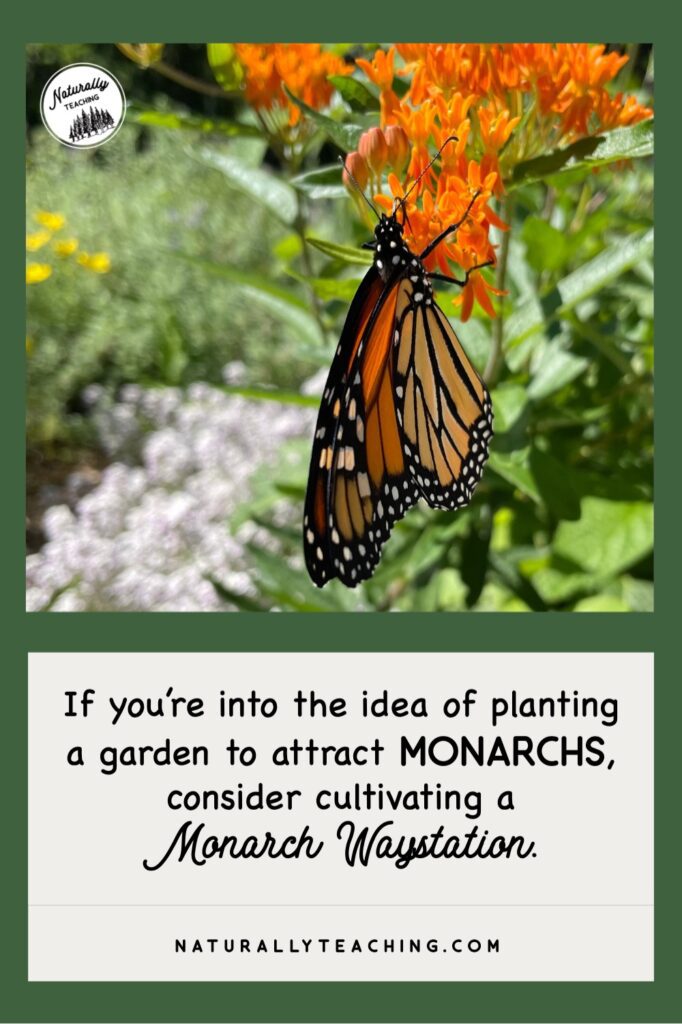
Monarch Watch also suggests that your waystation be made up of at least 10 milkweed plants, preferably of two different species. Some milkweed plants that grow throughout the U.S. are Common milkweed and Butterfly weed. Common milkweed establishes colonies of plants quickly, sprouting from the rhizomes underground. Butterfly weed is a beautiful orange flower that attracts butterflies of all kinds, but it doesn’t establish itself quickly and doesn’t bloom the first year it’s planted; this one will take patience but is so worth the wait! Swamp milkweed is also an option but prefers wet or very moist soil.
To learn more specific information for planting a monarch waystation, visit Monarch Watch to get the deets. There’s also a link on their site to register your waystation, and you and your class will receive a certificate of appreciation and your habitat will be included on the Monarch Waystation Registry. If you’re looking for a picture book to introduce the idea of creating a Monarch Waystation, check out Butterflies Belong Here: A Story of One Idea, Thirty Kids, and a World of Butterflies by Deborah Hopkinson.
Jenn and Michelle say, “[a]nother option would be to visit a butterfly house. There are several across the state of Michigan which have permits and source their butterflies from ethical butterfly farms. This can be a fun experience to see the butterflies up close and most have areas to view their chrysalises enabling students to see several steps in the lifecycle.”
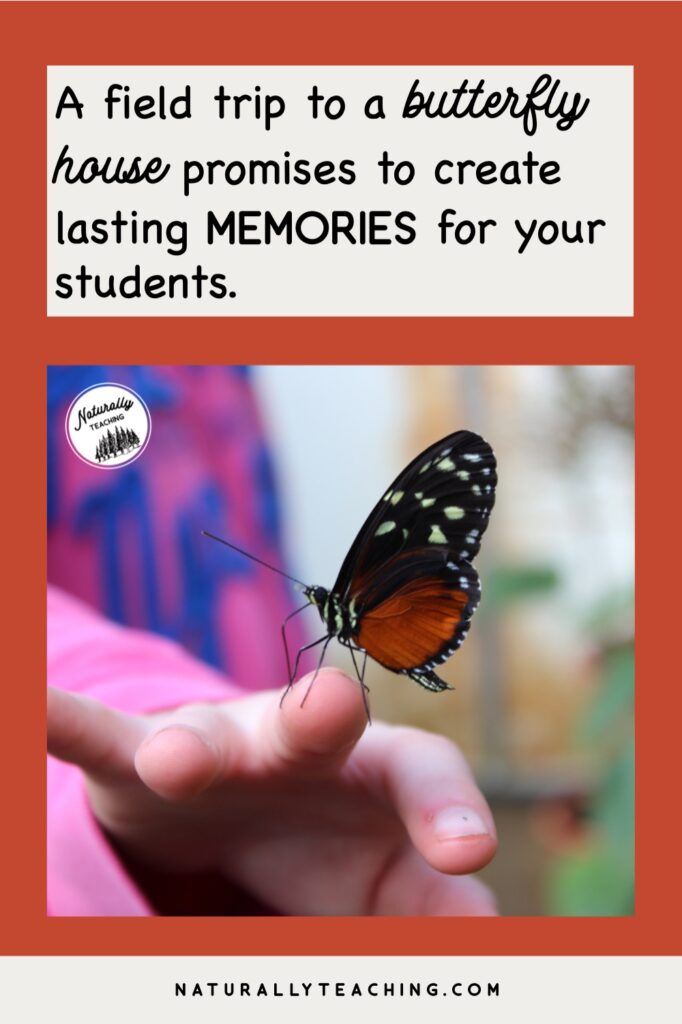
A field trip to a butterfly house promises to create lasting memories for your students. These conservatories offer a unique chance for your students to be surrounded by butterflies, a magical experience for most children! Not only does it feel surreal, but it also enables students to observe butterflies in real-time, witnessing their behaviors before their eyes. You may even get to see chrysalises and recently emerged butterflies, offering your students insight into two stages of the butterfly life cycle.
So, as you weigh the benefits of a raising butterflies kit against these alternatives, remember two things: 1) if you choose to raise butterflies in the classroom, you have the ecological responsibility of either caring for the adult butterflies until they die or to humanely euthanize them when your unit is complete. And 2) if you can’t commit to either of these options you should not use a butterfly kit in your classroom.
Hopefully this interview got you thinking about how you and your students can make decisions to help nature while also helping you achieve your curricular goals. If you’re looking for some pre-made activities to go along with your butterfly unit, check out my “Butterfly Life Cycle and Heredity Mini Unit for 3rd Grade” or my “Outdoor Pollination Scavenger Hunt for 2nd Grade”.
A huge thank you to Jenn and Michelle for their time and insights. Although not the most fun topic to talk about, they have shed some light on best practices for raising butterflies in the classroom as well as provided great alternatives to butterfly kits.
Check out ChippewaNatureCenter.org for publications about natural history and Midland historical topics, as well as follow them on Facebook or Instagram for great pictures and info.
Jenn Kirts is the Director of Programs at Chippewa Nature Center in Midland, MI. She has served as a Nature Day Camp Counselor, School Program Coordinator, and Nature Day Camp Director during her time at the center. She holds a Master of Science in Conservation Biology and is an avid gardener, particularly enjoying native plants.
Michelle Fournier is the School and Public Program Director at Chippewa Nature Center. She has served many roles at Nature Day Camp and the center, including Educator, Camp Counselor, Trip Leader, and Interpretive Naturalist. She graduated from the University of Michigan with B.S in Biology and Secondary Education. She enjoys gardening, birding, and supporting local pollinators.
Works Cited
Monarch Watch. (n.d.) Monarch Waystation Program. Retrieved from https://monarchwatch.org/waystations/
Affiliate Disclosure
I only endorse things that I’ve personally used, come highly recommended by trusted peers, or I’ve done extensive research on. As an Amazon Associate, I may earn commissions from qualifying purchases from Amazon.com. This is at no extra cost to you, the commission is covered by the company.
I am recommending products that I think will be genuinely helpful and useful, and not because of the small commissions that I receive. Please only purchase items if you believe that they will help you achieve your educational goals. If you’d like to learn more, check out my disclaimers page.
Feeling inspired by this ecological take on a raising butterflies kit for the classroom? Share your thoughts in the comments section.
Check out this podcast episode for picture books about invertebrates!
Looking for more articles about butterflies? Check out “What Butterfly Looks Like a Monarch and 4 Other Butterfly Survival Strategies”
2 thoughts on “A Raising Butterflies Kit for the Classroom: A Conservation Conversation”